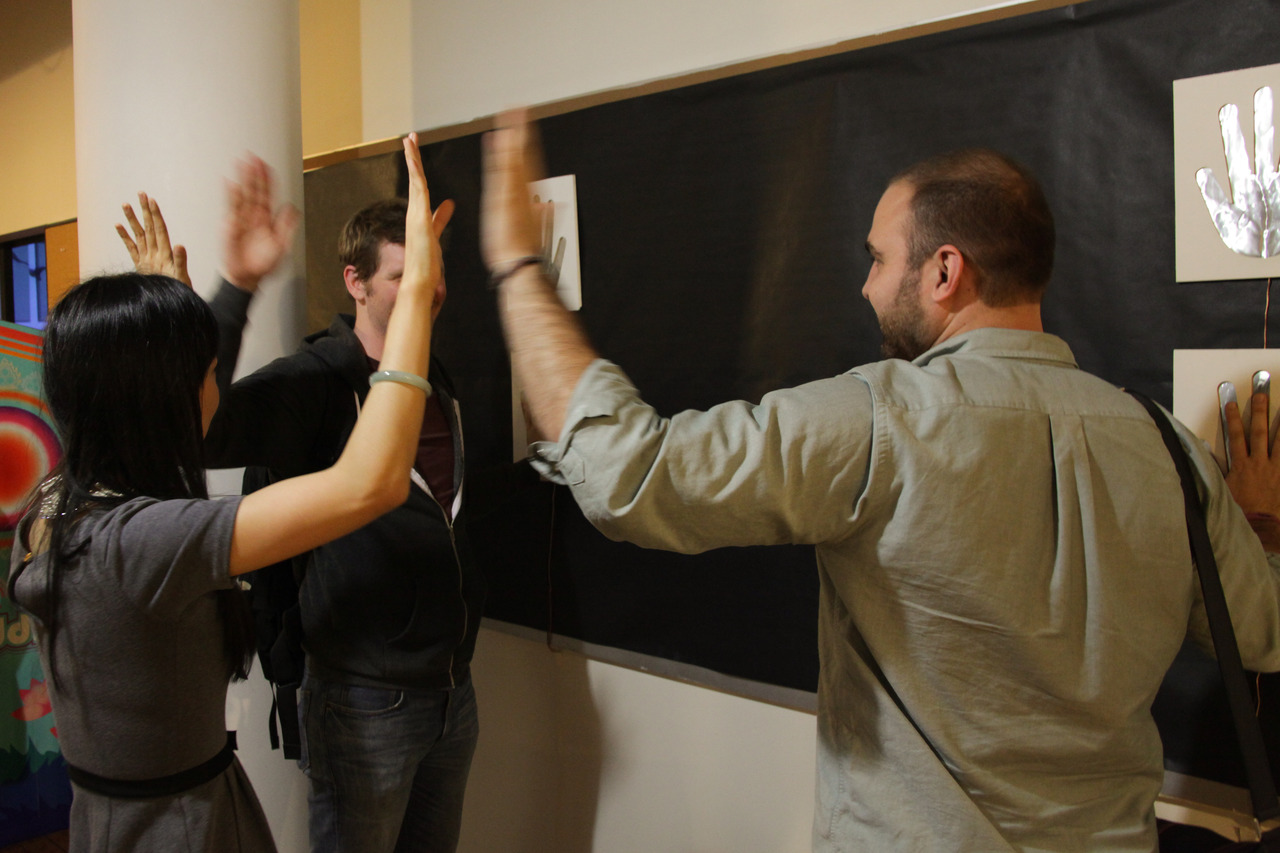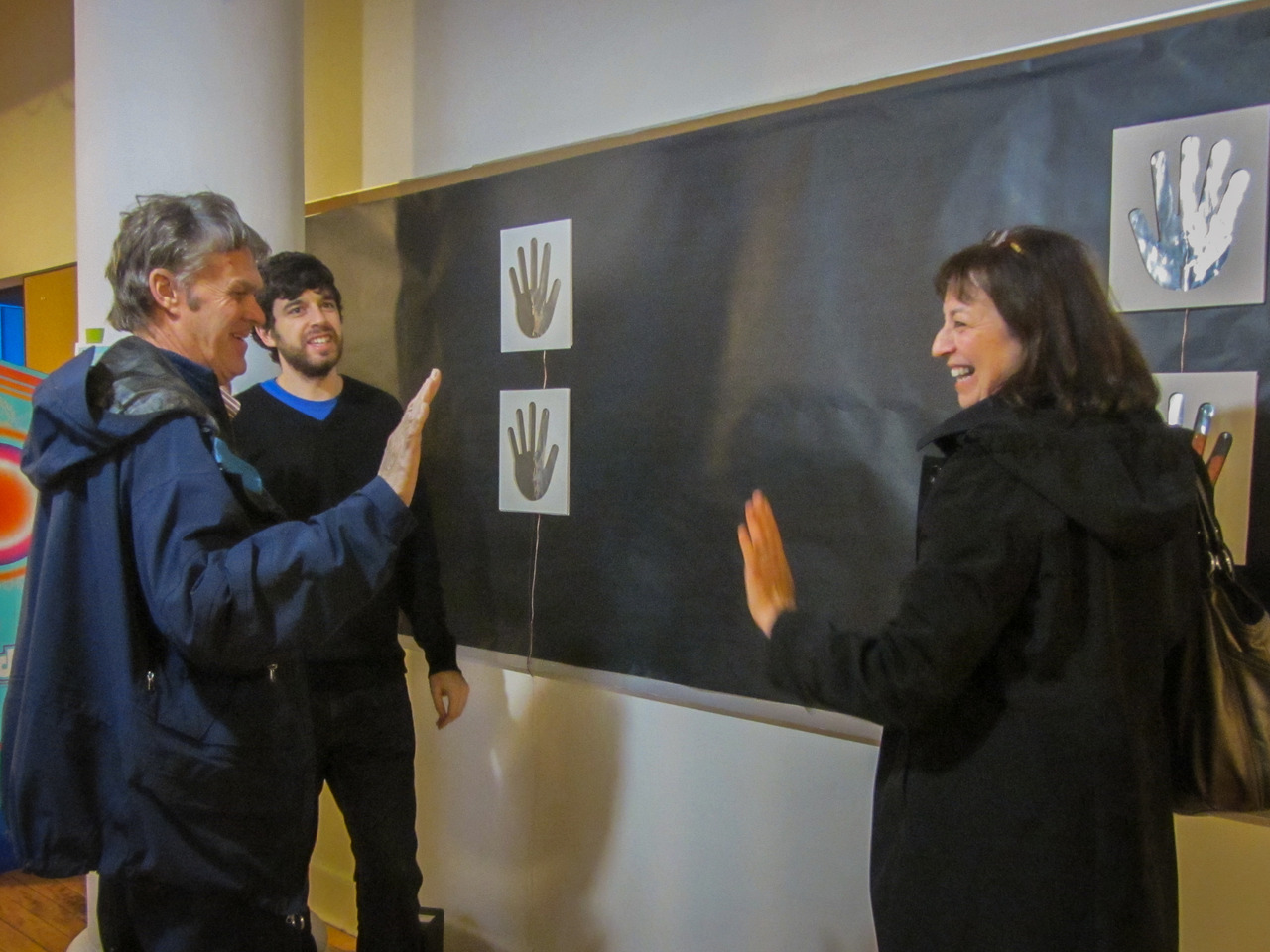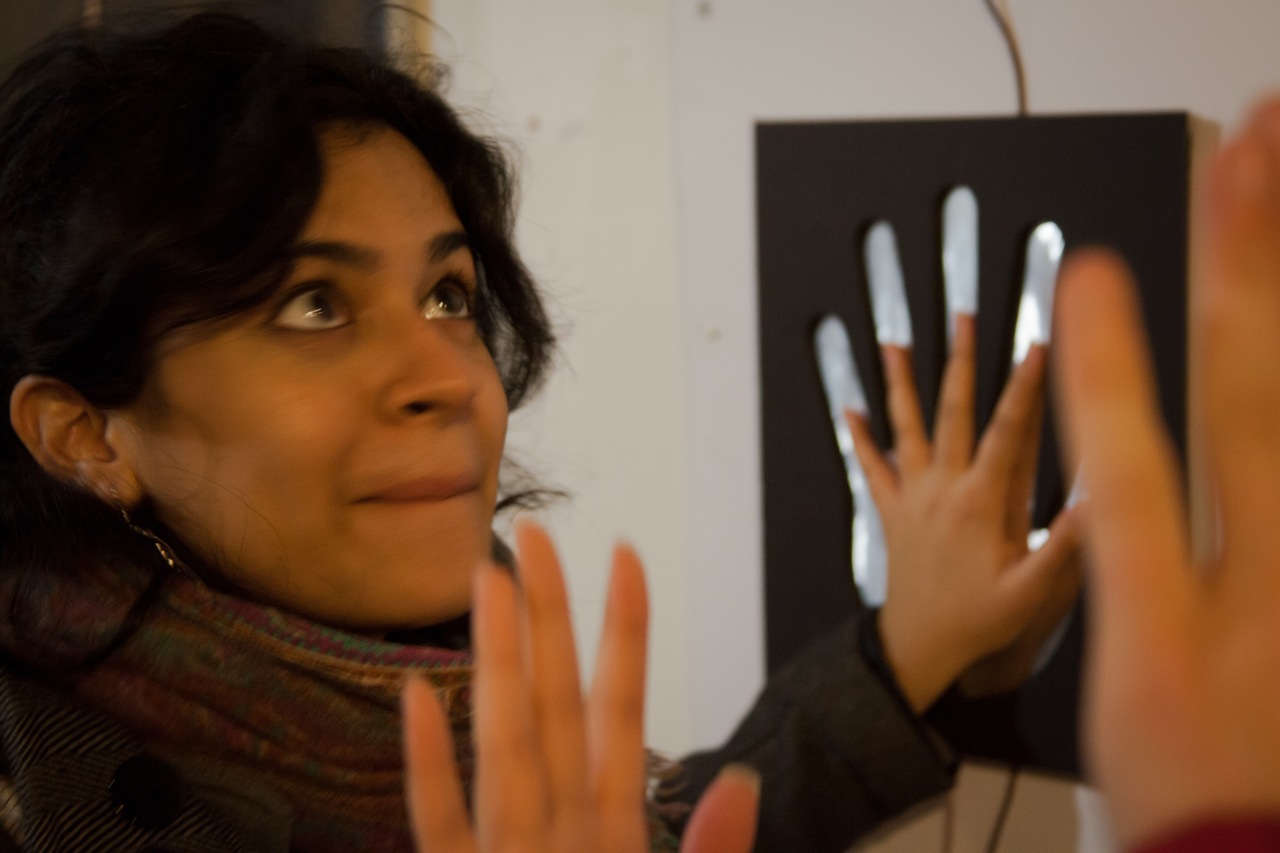The Collective DJ
The Collective DJ is a project that allows people to create music through touch and collaboration.
The Collective DJ was a team project originally designed and implemented for ITP’s Applications class. The project was inspired by a lecture given by Nathan Shedroff on science fiction interfaces.
The first version of The Collective DJ was presented in a large auditorium to the members of the ITP class of 2014. It had 8 rows of floor pads that could trigger 8 different samples, and each row had about 12-15 people joining hands in order to trigger their track.
How it works:
When two people connected to the pads touch each other, a very small amount of electricity rushes through them. When enough users tough each other in a row while two users stand shoeless on the aluminum floor mats, the group completes a circuit. The circuit completion is detected by a Makey Makey Microcontroller, which uses keyboard emulation to send one of eight keystrokes to a computer running Ableton Live. In Ableton, the eight keys are assigned to different samples of an audio track, and those samples are turned on or off via key press. See below:
The second version of The Collective DJ and was designed specifically to meet the spatial needs of the ITP Winter Show in 2012. Because we had much less space to work with, we needed to reinvent how users could experience being a DJ. We eventually moved to laser cutting hand silhouettes filled with conductive aluminum. Like the foot mats before, these needed only another participant to close the circuit and trigger the track.
Four different sets of hand pads are mounted on a wall, spaced apart from each other. When two users each put one hand on a hand pad and use their other hand to touch one another, they can trigger an audio sample to turn on or off. With four sets of hand pads, up to four samples can be triggered at once, allowing multiple users to build a song together.
As the UX designer on the team, I wanted the hand prints to be inviting and intuitive, with a clear, tactile interface.




Created by Andrew Cerrito, Mary Fe, Colin Narver, and Azure Qian at ITP in Fall 2012.

